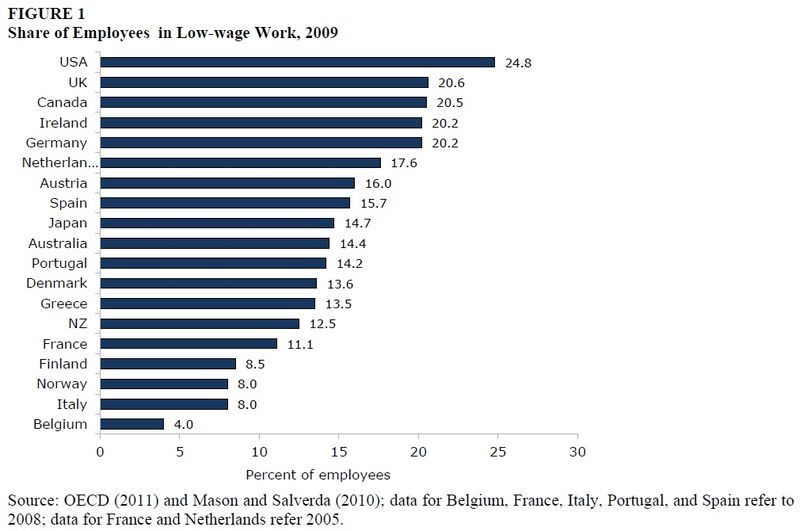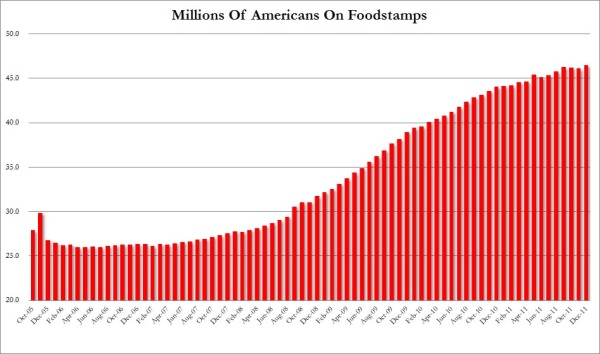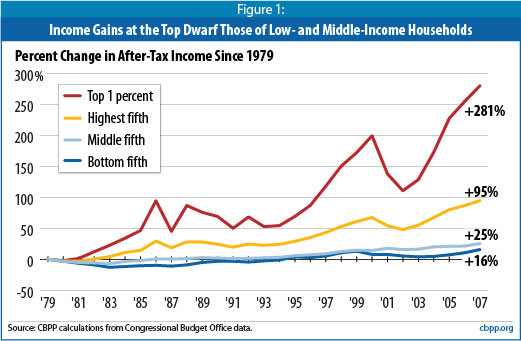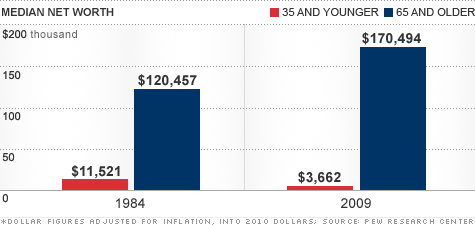Low wage America and the working poor – US has one of the highest number of employees working in low wage jobs of high paying industrialized nations. 1 out of 4 Americans employed work in jobs that pay less than $10 per hour.
- 8 Comment
Low wage jobs have been a big part of the so-called recovery. What they also signify is a more troublesome trend that continues to eat away at the middle class in this country. I’ve noted that the per capita average income for Americans is $25,000 and many seem to be shocked when they hear how low this figure is. A recent presentation only reinforces this figure by discussing the number of working Americans in low wage fields. The problem with having such a large portion of our population in low wage work is that as the cost of living goes up many of these people have a harder time providing for necessities like food, education, and also healthcare. Surprising or not, the nation has been seeing a massive divide between the working class and those at the top. The low wage employment growth signifies a continuation of this trend.
Number of Americans in low wage jobs
An interesting chart below was presented by economist Tim Taylor. The chart is illuminating:
Source:Â Conversable Economist Â
Taking a look at some of the industrialized nations with higher incomes in the world and the US has one of the largest numbers of those employed working in low wage fields. It is helpful to define what low wage work is; low wage work is employment positions that pay less than $10 an hour.  It is an interesting trend that has continued for well over three decades. A large portion of Americans are working in lower wage work (assuming they have work). The $25,000 per capita average of income doesn’t seem so farfetched when one out of four employed Americans find their source of employment to be in the low wage segment of the economy.
An interesting observation is made by Tim Taylor:
“The issue here can be summed up with this question: If someone in the U.S. economy is a law-abiding citizen who works full-time for a period of years, can they earn a level of wages that let them afford a slice of middle-class standard of living? If you are earning $10/hour and working 2,000 hours per year, your annual earnings of $20,000 would put you below the poverty line of $22,891 for a single parent with three children.â€
This fact also highlights the large silent numbers that we see with Americans on food stamps. Some are part of the working poor. Over 46,000,000 Americans are receiving some form of food assistance today:
Source:Â Zero Hedge
You can see how quickly things went up from 25 million or so before the recession hit to 46 million today. Is this really a recovery? Not if we define a recovery as paving the road to a middle class lifestyle for many Americans. Much of this path has been paved over even in the last couple of decades. The 2000s appeared on the surface to usher in prosperity for Americans but in reality, wages were stagnant and all the outward signs of spending came from diving deep into unsustainable levels of debt. Now that we are dealing with the aftermath of deleveraging people are realizing a growing divide in our country that is becoming more prominent and hard to ignore.
The growing divide
Some parts of the country have done exceptionally well in the last few decades:
Most of the gains have come to the top one and five percent of the nation. While those in the middle fifth of income saw income rise by 25 percent since the 1970s those in the top 1 percent have seen a stunning 281 percent average jump. Those on the low income segment have done much worse seeing only a 16 percent rise in income.
These are issues we need to explore since it appears the middle class is disappearing in our country. The stock market may be up over 100 percent since the low days of 2009 but most Americans have very little invested so it really hasn’t changed their lives:
Most Americans, especially the young have little invested in anything. Part of this comes from the massive number working in low wage fields. When examining employment trends we find that some of the top number of jobs for the future will come from lower wage sectors. How much as a nation do we value having a strong and vibrant middle class? You can’t call it a middle class when a large portion of employees are at the bottom.
If you enjoyed this post click here to subscribe to a complete feed and stay up to date with today’s challenging market!8 Comments on this post
Trackbacks
-
Joe Shwingding said:
That was actually a really great article.
Short, concise and eye opening. What is considered middle class and actually middle class are two very different worlds.April 14th, 2012 at 7:29 pm -
Ron said:
Think about this. As a USPS employee, fact, I made exactly $10.00 an hour in Oct, 1981. Also, the executive/CEO compensation vs. so-called ordinary workers is now countless multiples, here, than in most other countries. This is human history. Andrew “Mr. Philanthropy” Carnegie was one of the richest, in today’s dollars, people who ever lived. He paid steel-mill workers – ever done that work? – $10.00 A WEEK for 70+ hours’ work. Ever work, for countless years, 70 hours a week at a brutally hard job? The saintly Carnegie is on record as having said that any more pay would be a waste, since this vast ocean of human dregs would only piss it away on booze, gambling etc. Fact.
April 16th, 2012 at 4:27 pm -
jayhawk said:
I never really thought about it, but what a brilliant way to reduce the wages in the States. Get rid of the jobs first, then bring them back in at a lower wage. Not only does this eliminate the problem of having to reduce the wage of an existing worker, but you’ll have the slaves begging for one.
April 17th, 2012 at 7:52 am -
Peter Hayden said:
To all you young-ins. Have a backup plan as far as career choices, go.. Preferably receive some type of education as well as a trade. Taint gonna get any easier in the future, folks.
May 3rd, 2012 at 12:23 pm -
Robert said:
I am doing OK, it is my children that are having a hard time. They are in they mid to late 20’s. My kids would love to find a job that paid $10 an hour. My son was in Australia making about 100K a year. He came home to the US and is now looking at working at Wal*Mart for $8 an hour. He and his wife are living with his in-laws until things get better. My eldest daughter a math major was making about $80k then things got bad and she had to move home, can’t find anything that will pay for the gas to get to work. My youngest daughter is working at Taco Bell making minimum wage no benefits and yes living at home. I have a Niece that is getting her Masters and maybe a PHD. She figures if she gets enough education she can get a self supporting job. My Nephew graduated college and is doing multiple minimum wage jobs and barley supporting himself. Something has to change. The lying politicians of both parties have no idea how bad it is or they don’t care.
May 1st, 2013 at 2:08 pm -
Alan said:
I’m 27. I know I’ll never be able to get my own home. Ever since I was 16 I’ve worked low wage jobs. I was out of work for 2 years at one point because the recession was like a depression in michigan. I was 26 when I got into a union making $20 an hour but the work was up and down then I left the state for the winter to work down south for a non union company and when I came back I wasn’t welcomed back. Well I paid off all my old student loans because it took me $10,000 to realize college wasn’t meant for me. But I’m out of debt, and I got a new truck. I know I’ll probably never make $20 an hour again because I don’t have any real skills or connections to make that kind of money and I’m not college material. Now I make $10 an hour and I’d like a second part time job maybe in a factory. I have no kids or a girlfriend but even at that what woman wants a man who still lives at home with his family? I’ll probably never make a real living wage to take care of myself because all the good jobs around the Detroit area are gone and are replaced with low wages. I know I’ll probably never get married and even if I did I don’t want kids. There’s too much uncertainty to bring children into this world and I don’t think I’d make a good father. The only thing I can do is what I’ve always done. Being a laborer. At least I earn my money the honest way and I put myself through pain to do it. I just wish I was secure and stable. Something I’ve never really known.
June 30th, 2013 at 1:34 pm -
john said:
they are force a war
July 9th, 2015 at 8:40 pm -
Tom H said:
I realize this will be a grossly unpopular comment, but one thing US residents could do is refuse to reproduce. First, casting poverty onto a child who has no say in the matter strikes me as irresponsible, minimally. But beyond this, the rich need indentured servants … I mean, the poor to work in their factories, on their land, and in their stores. So if we stop making more poor, then the rich may be forced to heed what’s happening to us.
But instead, we just keep giving the super-wealthy and powerful more of what they want/need: human fodder.
August 27th, 2017 at 3:47 am




 If you enjoyed this post click here to subscribe to a complete feed and stay up to date with today’s challenging market!
If you enjoyed this post click here to subscribe to a complete feed and stay up to date with today’s challenging market!